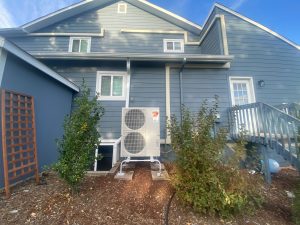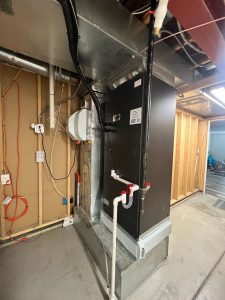Rule 2: Don’t Use Energy Made from Burning Stuff
And…we’re back! Howdy. Hope you had a great week/weekend/whatever day of the week it was for you. Whether you spent the time since our last post looking at all the ways that you can stop burning stuff in your home, are just now diving back in on your climate-friendly home journey, or are joining us for the first time, we’re glad you’re here. (Psst – if this is your first time here, we recommend starting with our intro to the climate-friendly home, followed by our blog on rule number 1, before digging into rule number 2 here!)
Today, we’re talking about Elephant Energy’s rule number 2 for a climate-friendly home: Don’t use energy made from burning stuff. Ready to learn more about what that means and what it looks like to put this rule into practice? Let’s begin.
What “Don’t Use Energy Made from Burning Stuff” Looks Like
 In our last post, we explored the different upgrades you can make to stop burning stuff in your home. TL;DR: There are tons of climate-friendly solutions available to help you quit burning things (ahem, gas) at home.
In our last post, we explored the different upgrades you can make to stop burning stuff in your home. TL;DR: There are tons of climate-friendly solutions available to help you quit burning things (ahem, gas) at home.
But what about the energy needed to power these climate-friendly upgrades?
Enter: rule number 2 of Elephant’s climate-friendly home. As its name suggests, this rule is all about the type of energy you’re using in your house. And spoiler alert: just like a climate-friendly home doesn’t burn stuff, it also doesn’t use energy that comes from burning stuff.
Fortunately, it’s easier than ever to tap into clean and renewable energy sources instead of relying on that coal burning plant:
Option 1: Make Your Own Energy
Obviously, your best bet is to make your own energy. You might start by looking into installing solar or geothermal, both of which are great, renewable sources of energy (with lots of incentives available to make them more affordable). And the great thing about making your own clean energy? You can design your system to meet your home’s distinct needs.
That said, these options aren’t available to everyone (big hugs to those of you with flat roofs or lots-o-shade).
Option 2: Join Community Programs
If you can’t make your own, your next best energy option is to join a community solar program. These programs allow you to either purchase a portion of a community array or pay a subscription fee for a portion of the energy a community system produces. Unlike rooftop systems, the energy generated from a community solar project is not used to power owners’ and/or subscribers’ homes directly: Instead, it replaces (or reduces) what they pay their utility company for electricity.
Option 3: Purchase Clean Energy
And if neither of those is an option? We recommend buying green or checking out local or state programs for renewable energy and efficiency. By making small (or large!) adjustments to where you’re getting your energy, you can reduce your home’s carbon footprint, thus putting you one step closer to a climate-friendly home.
So, there you have it! By embracing renewable sources of energy, you’re well on your way to having a climate-friendly home. Stay tuned for next week, where we’ll dig into rule number 3: Be efficient.
__
Want to transition to a climate-friendly home, but overwhelmed by how many options are out there? Check out our electrification roadmap tool. In less than five minutes, you’ll have a personalized roadmap that shows you exactly where to begin.
